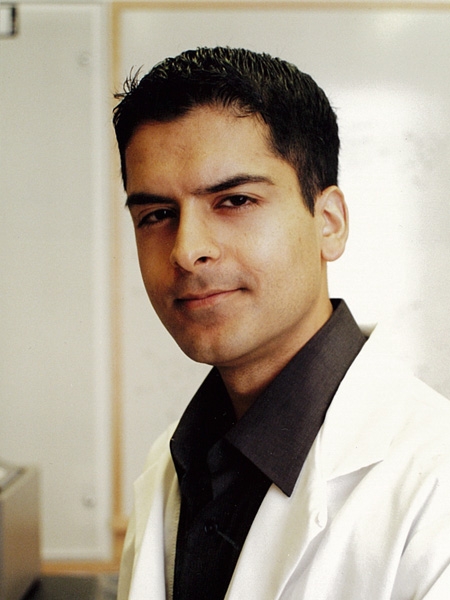
Dr. Samie Jaffrey
Faster, More Accurate Lab Testing With Results That Glow in the Dark
Scientists from Weill Cornell Medical College are studying a way that may some day speed up lab testing by instantaneously measuring proteins within biological samples.
The researchers, led by Dr. Samie Jaffrey, associate professor of pharmacology at Weill Cornell Medical College, have been awarded a competitive grant from the NIH called the NIH Director's Transformative R01 (T-R01) Awards. According to the NIH, the grants were given to "encourage investigators to explore bold ideas that have the potential to catapult fields forward and speed the translation of research into improved health."
The NIH granted 42 researchers with awards totaling $30 million. Dr. Jaffrey's award is $1,690,000, funding the study for five years.
"I am proud of Dr. Jaffrey's important work and that he and his colleagues have been recognized with such a prestigious award," says Dr. Lorraine Gudas, chairman and the Revlon Pharmaceutical Professor of Pharmacology and Toxicology of the Pharmacology Department, at Weill Cornell Medical College. "Such research is very important for both the advancement of basic science research and for the improvement of clinical medicine."
Protein detection is essential for diagnosing illnesses, detecting environmental toxins, and for most types of biomedical research. Testing typically takes hours or days, and requires antibodies that specifically bind these proteins. Specialized techniques are required to transform the binding of these antibodies into signals that detect the presence of these proteins. Dr. Jaffrey and his lab are developing new protein recognition tools that rapidly emit light upon binding specific target proteins. These simplified protein sensors have the potential to vastly simplify and reduce the expense of protein detection.
Dr. Jaffrey has been developing sensors from RNA — a natural biomolecule — that has the capacity to adopt a variety of shapes. By designing these molecules that are complementary to proteins, RNA can form complexes with specific target proteins. The RNAs are designed to bind fluorescent compounds after joining with proteins in urine, blood or tissue specimens. If there is a positive presence of the targeted protein, the sample then glows green.
"The ability to simply add a sensor to a biological sample, and monitor the level of a given protein in minutes, would allow clinical diagnosis and medical decision making to occur much more rapidly," explains Dr. Jaffrey. "A big advantage is speed. The current tests to measure proteins can take days. But the biggest advantage is how rapidly we can design these sensors from RNA." Dr. Jaffrey's laboratory is also developing approaches to further increase the speed of protein detection. By creating micrometer-sized spots of RNA sensors on glass slides, minute quantities of proteins from small samples can be detected using sophisticated microscopic techniques. "We anticipate making arrays of microspots, with each microspot containing sensors to distinct proteins, allowing dozens or hundreds of proteins to be detected simultaneously," explains Dr. Jaffrey. Other research applications include generating cells or developing genetically altered animal models that produce the RNA sensors within their bodies. In these transgenic organisms, measuring the fluorescence can monitor the presence of target proteins, over time. This way, researchers can measure how protein levels in living cells and tissues change in real time, in response to medical treatments or during the course of disease.
